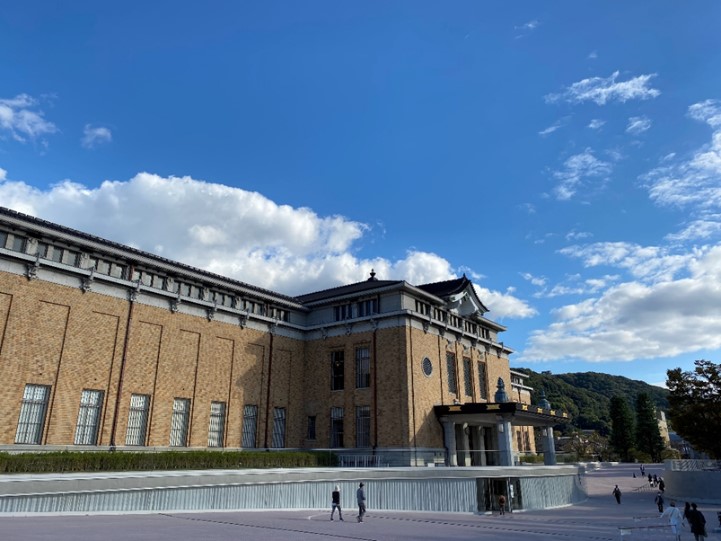“Enjoy Kyoto” นิตยสารฟรีที่ทำให้คุณได้ค้นหา “เกียวโต” ที่แท้จริง
2017.03.03
More than just a tourist destination
Q: What are some of the policies that you keep in your work?
Richmond: “The concept when we first began ‘Enjoy Kyoto’ was ‘The World’s Hometown,’ a Kyoto that people would want to come live in. We wanted to publish information that wasn’t in the guidebooks. Because of that, we don’t really have much in the way of strict sightseeing content. We begin with meeting people, talking to that key person, and gaining a deep understanding of what that person does. From there, we branch out to that person’s connections.
To me personally, Kyoto really is my second hometown, and I think there is a special kind of sentiment among the residents here. For me, it’s most important that we convey that message. ‘Enjoy Kyoto’ is of course a newspaper for tourists, but I think we’re succeeding in making articles that may make people feel something deeper, that they may feel like they want to live here after they’ve come for a visit.”
Takei: “We don’t just want to line up a bunch of information. Ideally, we’d like to put our readers right on the scene with the people of Kyoto. Even if our interviewee’s life stories themselves aren’t the main thrust of an article, we want to include some part of them, anyway. There are times when we are forced to cut for space, though. (laughs)
When we were interviewing at Takezasado Woodblock Printing, for example, the family told us this lovely story about how they have a summer custom of getting together to eat somen noodles. It’s like the saying, “drinking of the same cup”—that these people have this shared experience, this bond. That story has nothing to do with the main article, but we put it in anyway. I think if we want people to fall in love with Kyoto, we need them to fall in love with the people of Kyoto first. Take this photo from our interview with Takezasado Printing: the man in the center is the fifth generation of printers in his family, and his father on the right is the fourth generation. The lady on the left is Yuko Harada. She’s the first in their practice who isn’t a family member, but as an apprentice, she’ll be the sixth generation. Still, when they’re all standing here together like this, they really do look like family.”
Q: What do you find challenging when putting an article together? What is most enjoyable?
Richmond: “’Enjoy Kyoto’ is my first experience with any kind of job in the media, and it’s very different from the work I was doing before, translating websites and academic papers. It was challenging at first, to be honest. We write the paper for people who don’t know anything about Kyoto or Japanese culture, but we don’t want to make the content too simplistic, either. (laughs)
A lot of Japanese writing is written with the tone of a teacher explaining to a student, but for a lot of Westerners that tone can feel patronizing. Instead of being explained to, many people prefer to be spoken to on the same level, as if from a friend. A, “Let’s enjoy Kyoto together!” kind of feel. So I end up writing a lot of the articles with that kind of friendly tone. I had a bit of trouble in the beginning finding the right kind of voice, but now I write as if the reader and I are walking together through the streets of Kyoto, exploring together. That’s the kind of scene I’m trying to create.
Another thing I try to do with the writing style in ‘Enjoy Kyoto’ is to picture my reader standing at the bus stop, reading the paper while they’re waiting. I want to write the article like a story that gets them excited to know what comes next.”
Takei: “Amongst craftspeople and artisans, of course, there are many types of people when it comes to interviewing. When it comes to someone who’s something of a veteran, they’ve probably gotten quite used to putting their words together to describe their craft and their process. They have ready answers for the interviewer. But for someone who’s more of a novice, the case may be that they come to their answers through the process of our asking them. When that happens, and it feels like we’ve drawn out this answer and discovered it together—that’s really interesting.”
Interviews in the field may not always go as you expect, it seems. The result, however, has gained “Enjoy Kyoto” quite a bit of attention.
"Enjoy Kyoto" for years to come
Q: Do you have any future developments planned for “Enjoy Kyoto”?
Tokumo: “A number of people have told me they’d like to be able to read the paper in Japanese. We get a lot of those requests from ryokan inns. There’s a lot of information in our articles that Japanese people don’t know about, either, so we’re starting to play with the idea of publishing in Japanese as well.
“We’re also looking into setting up a website. It would be great to be able to put our articles up in real time, and if we were publishing on the web I think it would make sense to have a Japanese version as well.
There’s also content for which we simply run out of space in the paper version of “Enjoy Kyoto,” but an online version doesn’t have the same constraints. We could include stories from the people we meet along the way when we’re researching for a story, and really expand the breadth of the information we’re putting out that way.
“We could include information on local tours and things online, too. Not only tours, but local experiences for people to try, and information about local crafts right alongside our stories. I think people would really see value in that kind of content.”
You’ll have to stay tuned for “Enjoy Kyoto”’s newest developments!
The City of Kyoto is rich in resources that make it a world famous travel destination, and the “Enjoy Kyoto” staff certainly know it better than most of us. As a city with a strong travel industry, international students’ talents and knowledge are in demand now more than ever.
Mr. Tokumo agreed that the city is full of opportunities: “Kyoto is overflowing with jobs in the tourism industry, to be honest. And because of that, I can say without hesitation that I’m hoping for the success of all these ryokan, hotels, and other ventures. To students, I would say: Try an internship, and find a place that suits you. I think international students are especially sought-after now.”
As a city supporting the traditional arts of Japan, and a city visited by people from all over the world, Kyoto is a truly unique place to study abroad.
We hope all of you will enjoy Kyoto, too!
Enjoy Kyoto website
http://enjoy-kyoto.net/
Enjoy Kyoto Facebook
https://www.facebook.com/ENJOY-KYOTO-373891732743216/











